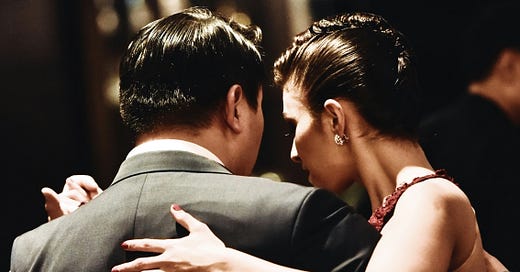Relationships are complex. Every interaction is a mix of personal history, individual perception, and shared experience. The key to maintaining emotional equilibrium while forming meaningful connections is understanding what’s “Mine, Yours, and Ours.”
Mine: Recognizing Your Emotional Blueprint
Self-awareness is the cornerstone of emotional intelligence. It involves recognizing and taking responsibility for “our stuff”—the unique mix of past experiences, internal wiring, and personality that shape how we interpret situations and respond to others.
When we feel triggered, it’s rarely just about what’s happening in the now. More often, our history is influencing our reaction. Asking, “Is this ‘my stuff’?” highlights what requires our attention. When our fears or wounds are activated, we need to examine and address them. Our neuroses are not a problem for someone else to fix.
Yours: It’s Not About You
Not everything directed at us is about us. People carry their own unresolved issues and insecurities, which can lead them to project their struggles onto others. When someone reacts negatively, it’s worth pausing to ask: “Is this really about me?” Sometimes, we’re standing in front of a ghost from someone’s past. Other times, we become the unfortunate target of displaced stress, frustration, or unmanaged emotion.
Recognizing when someone’s behavior is not something to be taken personally allows us to avoid unnecessary emotional drain. We can extend empathy without absorbing blame. Just because someone assigns us a role in their story doesn’t mean we have to play it.
Ours: The Co-Created Dynamic
Relationships are a mashup of personalities, histories, and emotional tendencies. Sometimes, a particular combination creates complementary magic. Other times, differences fuel tension and misunderstanding. The key question to ask is, “How am I participating in what’s happening here?”
Navigating the “Ours” requires a deep understanding of yourself so that you can honestly appraise what you’re contributing to a situation, for better or worse. Then, when you recognize it, you can decide how you can improve the pattern by engaging differently. When you can understand the shared dynamic, you can consciously shape it rather than getting caught in automatic cycles.
Healthy relationships don’t just happen. They require intention. When we approach others with self-awareness, courage, and curiosity, we’re positioned for connection. With the right tools, we can love without losing ourselves in the process.
If you liked this post, spread the Joy and share it with someone else!
If you’re interested in more strategies for strengthening self-awareness and raising your EQ, don’t miss Finding Joy:
For more of my musings on love, life, and work, you can follow me on X and Linked In.




